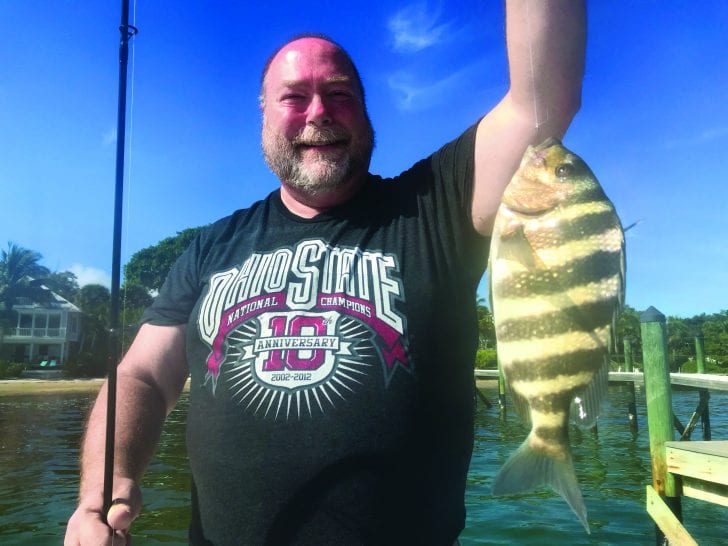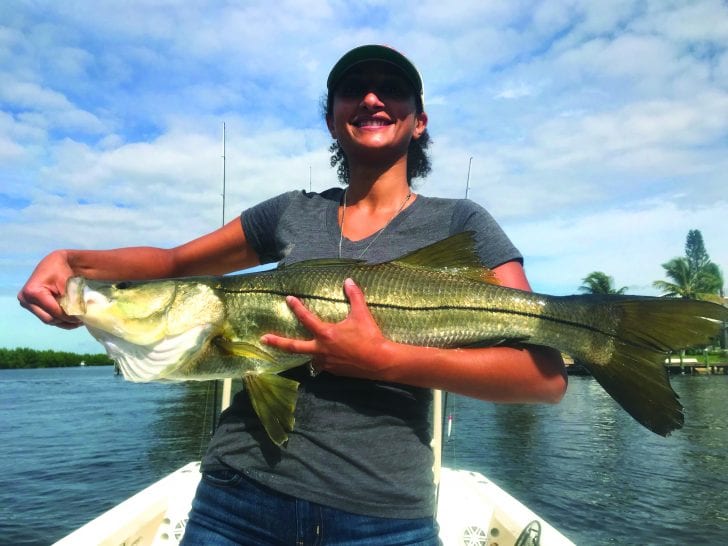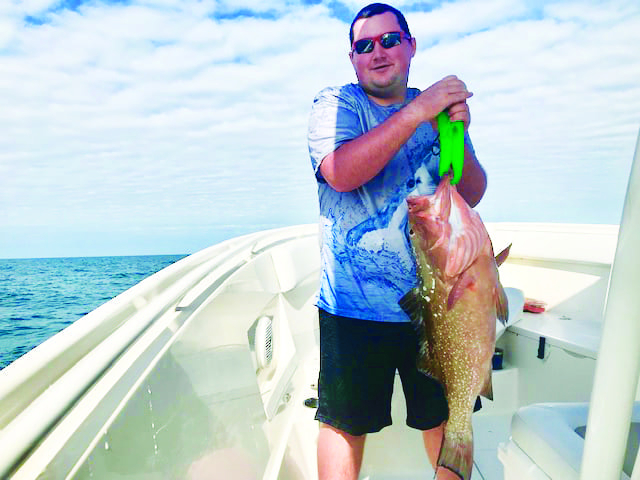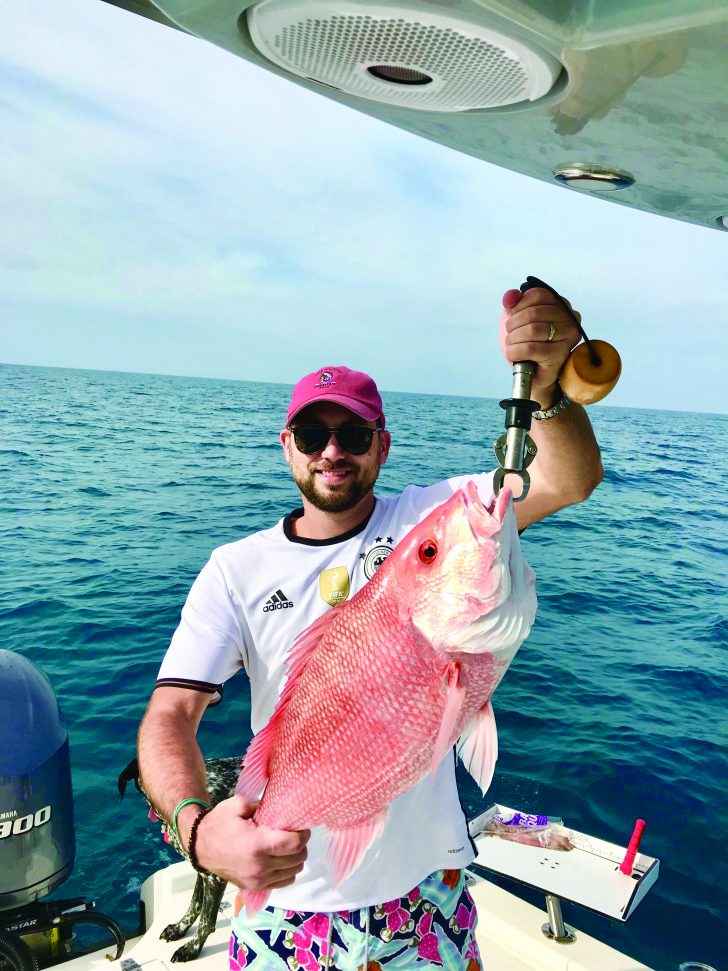by Captain Terry Fisher
The waters in SWFL have much improved over the last months for both inshore and offshore. The catching has improved as well.
Inshore: one may expect to catch their limit of sheepshead. Sheepshead are the target species of the month and will reward those catching them with a good fight and a tasty meal. Sheepshead will be found on reefs (close to the outer islands) and will make up the ‘by-catch’ while targeting grunts, porgies and a variety of snappers.
Sheepshead have a reputation of ‘being hard to catch’. However, nothing is further from the truth. All fish are hard to catch when not feeding. Feeding sheepshead will take bait as aggressively as any other species. Look for them around virtually any structure. One of my favorite clients, Mr. Dave Porter of Dayton, Ohio, is pictured with a sheepshead he landed while on holiday with his wife Joan and their 3 children. As always, it was a wonderful ‘family’ outing that we enjoy together every year.

Even though snook are ‘out of season’, they are a great fish to target during the winter months, as they move from beach spawning grounds into the rivers, creeks and canals. They are a fun and formidable species for anglers looking for their ‘fish of a lifetime’. Pictured is Mr. John Hennessey of Indianapolis, with a 33” snook he caught in one of the many Cape Coral canals. Also, a 35” snook was caught a couple of days later by lady angler, Mary Elmalac of Tampa, Florida. Both fish were caught free-lining live pinfish, on light tackle.


Spanish Mackerel should be found in around 9’ of water in Pine Island Sound, Charlotte Harbor, and off the beaches of Sanibel, Captiva and Cayo Costa. Gold spoons, Gotcha lures on 40lb. test monofilament leaders or weighted jig heads under a cork with shrimp will get the job done. Otherwise, use wire leader with trailer hooks for good results. Mackerel swim and dart so fast that many strikes will result in misses (reason to use trailer hooks). Seatrout are re-entering the estuaries in the northern end of Pine Island Sound, Placida, Bull and Turtle Bay areas. Shrimps under a popping cork will deliver best results. Redfish are small but may be found in St. James Creek and other similar areas of Matlacha Pass, including the Indian Fields north of the bridge. Likewise, they will show up in the passes of Boca Grande and North Captiva on incoming tides. Mangrove Snapper will be found around most any type of structure. When targeting them, be aware that you are required to use small circle hooks. Bait with very small shrimp or shrimp tails to get more hook ups.
Offshore: Triple Tail has been ‘joining the party’! Look for them around the crab buoys offshore. They like shrimp. They are easy to spook, so stealth is the secret when approaching them. Once located, make a presentation within 4’ of the buoy for best opportunity. Do not hit the fish with the bait! A few permit are in the area. Find a reef, anchor up and chum shrimp out the back of the boat. They like dollar size blue crabs, pass crabs or shrimp. Usually one will see their silver refection in the water as well as breaking the surface in the chum line behind the boat when feeding. That is when one should make the crab presentation. Big grouper require that one go far offshore to really have a chance. Most success has been reported in 75’ to 125’ of water either on a known, productive location or by drifting. Use sardines or cut squid. Pictured is Jeremy Berstein (grandson of Cape Coral Captain Dennis Pelligrino), with one of many red grouper they recently caught in about 85ft. of water while drifting. Thanks for the picture and report Captain!

Red Snapper may be ‘out of season’ but they are still exciting to catch and are found in deeper waters along with groupers. My fishing friend, John Medsker and his nephew Marcus, recently went out and caught a number of big fish on cut sardines, including a few big red snapper. Pictured is Marcus with one of them. Nice going John. Thank you for the picture and report. I want to be on the next trip when Red Snapper season opens!

